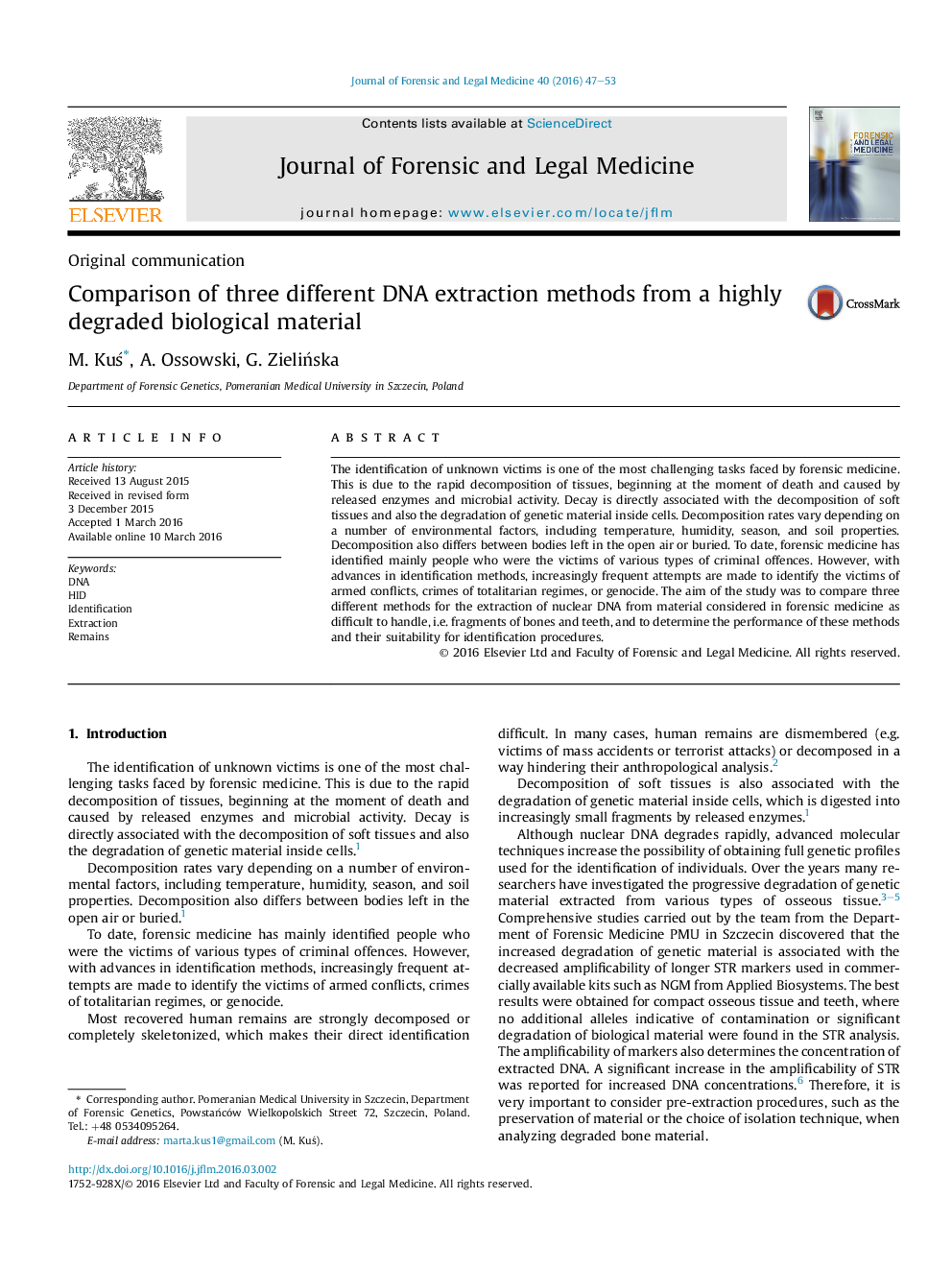| Article ID | Journal | Published Year | Pages | File Type |
|---|---|---|---|---|
| 101630 | Journal of Forensic and Legal Medicine | 2016 | 7 Pages |
•Comparison of three different methods for the extraction of nuclear DNA from degraded bone material.•PrepFiler® and the organic method are equally effective in the extraction of DNA from fresh bone material.•For samples coming from old bones the best results were achieved using the organic extraction method.•QIAamp®DNA Investigator Kit is unsuitable for the analysis of decades-old bone material.
The identification of unknown victims is one of the most challenging tasks faced by forensic medicine. This is due to the rapid decomposition of tissues, beginning at the moment of death and caused by released enzymes and microbial activity. Decay is directly associated with the decomposition of soft tissues and also the degradation of genetic material inside cells. Decomposition rates vary depending on a number of environmental factors, including temperature, humidity, season, and soil properties. Decomposition also differs between bodies left in the open air or buried. To date, forensic medicine has identified mainly people who were the victims of various types of criminal offences. However, with advances in identification methods, increasingly frequent attempts are made to identify the victims of armed conflicts, crimes of totalitarian regimes, or genocide. The aim of the study was to compare three different methods for the extraction of nuclear DNA from material considered in forensic medicine as difficult to handle, i.e. fragments of bones and teeth, and to determine the performance of these methods and their suitability for identification procedures.
